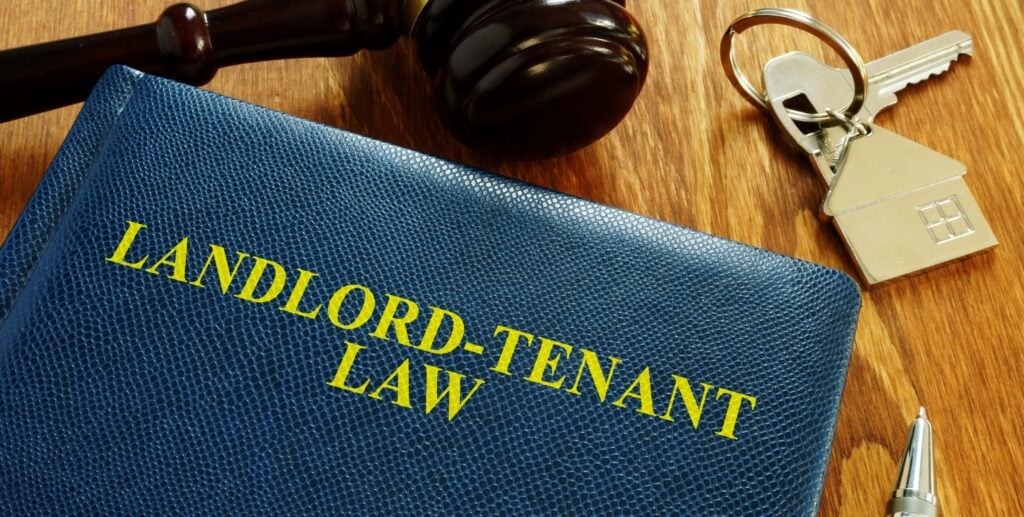As any landlord can attest, tenant screening is one of the most important aspects of running a profitable business. As long as your screening does not violate fair housing guidelines (discriminating based on age, race, sexual orientation, disability, religion, national origin, or familial status), landlords have generally been free to make a judgment call as to who they can rent to, all things being equal amongst candidates.
However, a raft of new housing laws in California, New York, and elsewhere could eliminate the former red flags that landlords may have used to disqualify potential renters. Here’s what you need to know.
Refuse to Rent or Evict Based on Criminal Activity
According to Assembly Bill 1418, California landlords will no longer be able to enact “crime-free” housing programs, which include refusing to rent or evict those with prior criminal convictions. The “nuisance laws” were initially touted to combat crime and nuisance behavior.
The law was enacted to varying degrees by different municipalities and drew on strong support from the police, prosecutors, and politicians to help keep neighborhoods safe, especially in areas with drug and gang-related problems. However, an L.A. Times investigation discovered that minorities were disproportionately affected and prevented from attaining housing after their sentences had been served, preventing them from finding accommodation.
Limits on the Amount a Tenant Must Pay Upfront
California landlords will no longer be able to charge multiple months’ rent as a security deposit. Assembly Bill 12 in California limits the amount landlords can charge to one month’s security. New York passed the same one-month security deposit bill in 2019. Security deposit amounts vary from state to state, with some states, such as Florida, imposing no limits.
Bad Credit Is Not a Reason to Deny an Application
Running a credit check has traditionally been a way to screen tenants, but may be a futile exercise in some places. California Bill SB 267 prohibits landlords/property managers from using a person’s credit history as part of the application process if they have a government rental subsidy such as Section 8 without offering the applicant the option to provide alternative evidence of a verifiable legal means to pay their portion of the rent.
Under California law, landlords cannot refuse to rent to a tenant if they have a Section 8 voucher. They cannot post “No Section 8” or “No Vouchers” on their rental advertisements, or ask to see your Section 8 eligibility before renting.
Landlords Must Have Good Cause for Not Renewing a Tenant’s Lease
This law is similar to those recently adopted in California, Oregon, and Washington. In New York City, landlords must have a good cause for not renewing a tenant’s lease. Elsewhere in the state, municipalities can use their own discretion whether to adopt it.
The exact criteria for “good cause” include nonpayment of rent, illegal behavior, if an owner is trying to change the use of an apartment from residential to another purpose (like commercial space), or when an owner wants to demolish a building.
Previously, tenants in NYC faced less protection if they lived in a single-family home, in a building of less than 10 units, or if the landlord lived in the building, so long as the landlord did not own multiple other buildings.
The Reasoning Behind the New Tenant Protections
The rapid increase in rents and the end of coronavirus protections saw homelessness soar to 12% by the end of 2023. About 653,000 people were homeless, a record since modern surveying of the statistic began in 2007, marking a more than 70,000 increase from a year earlier.
The number is all the more shocking because there has been a downward trend in homelessness since 2012. HUD Secretary Marcia Fudge told the Associated Press that high homeless numbers underscored an “urgent need” to support proven solutions.
“The most significant causes are the shortage of affordable homes and the high cost of housing that have left many Americans living paycheck to paycheck and one crisis away from homelessness,” Jeff Olivet, executive director of the U.S. Interagency Council on Homelessness, told AP.
California and New York See a Homelessness Epidemic
California has shifted to a pro-development stance to counter a rising wave of homelessness, diminishing the threat of antidevelopment lawsuits and sidestepping zoning law restrictions. Amongst the new laws to have been green-lit have been rental laws that favor keeping tenants housed and difficult to turn away.
However, instilling them has been contentious due to the state’s powerful landlord lobby. Governor Gavin Newsom embarked on a dual-pronged approach—clearing homeless encampments while promoting tiny homes as a scalable solution.
And in New York, the use of ADUs has also been approved. In New York City, homelessness has hit a two-year high. An estimated 4,140 people are living unsheltered, up 2.4% from last year’s 4,042 and the most since 2005, when the city began conducting the surveys.
Although many people believe that the 70,000 migrants seeking shelter each night are the issue, New York City social services commissioner Molly Wasow Park said in an interview with the New York Times that the city sees no evidence of “any systemic increase in the number of unsheltered people who are asylum seekers.” Mayor Eric Adams’ administration has made tackling the homeless epidemic a priority since the pandemic saw numbers surge, but it faces an uphill battle.
Final Thoughts
Major cities around the country have seen a spike in homelessness and, as such, have made tenant protection and affordable housing a key component of their lawmaking. Thus, the housing crisis means landlords who can offer affordable housing are in a coveted position in cities around the country, especially New York City and various cities in California.
While Section 8 housing has traditionally been a contentious issue for landlords, partly because of inspectors who might cite expensive repairs and upgrades before approving an apartment, it could be a win-win proposition for landlords who have mastered the Section 8 process since Section 8 pays guaranteed market rent. However, collecting a tenant’s portion has often been another issue amongst landlords, leaving many to write it off as lieu of guaranteed income.
Section 8 has traditionally been a starting block for a smaller landlord’s investment career. The apartments are often in affordable neighborhoods, and as long as they pass an inspection, they can receive high rents. The downside, especially with the newer rental laws in effect, is that landlords might not be able to pick and choose their tenants as they once could. Should a property be damaged by a Second 8 tenant, it is extremely difficult for a landlord to claim the expense. Thus, they must pay out of pocket to pass another inspection and get it re-rented. Many landlords would rather forgo the hassle.
Ready to succeed in real estate investing? Create a free BiggerPockets account to learn about investment strategies; ask questions and get answers from our community of +2 million members; connect with investor-friendly agents; and so much more.
Note By BiggerPockets: These are opinions written by the author and do not necessarily represent the opinions of BiggerPockets.




